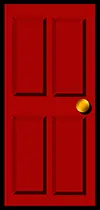Embarking on the self-publishing journey is an exhilarating challenge, especially when it comes to the critical aspect of book design for self publishers. Effective book design goes beyond aesthetic appeal, impacting how readers perceive and interact with your content. For self-publishers, mastering the art of book design is crucial to ensure that their book not only captures attention but also provides a seamless reading experience.
The Fundamentals of Book Design for Self Publishers
Book design for self publishers encompasses several critical components that together create a cohesive and engaging product. Here’s a closer look at these essential elements:
- Structural Components: This includes:
- Body Copy: The main text of your book, which needs to be reader-friendly and aesthetically pleasing.
- Front Matter: Elements before the main text, such as the title page, preface, and table of contents.
- Back Matter: Components following the main text, like indices, bibliographies, and appendices.
- Cover Design: Involves designing the front cover, spine, and back cover. The cover is the first point of interaction with potential readers and needs to be visually compelling and reflective of the book’s content.
- Dust Jackets: For hardcover books, dust jackets serve both protective and marketing purposes, offering additional space for artwork and information that can intrigue readers.
Initial Layout and Design Considerations
Many authors begin their design process using Microsoft Word. This familiar tool allows authors to layout their manuscript’s text and basic structural elements, setting the stage for more detailed design work.
Transitioning to Advanced Design Software
To achieve a professional-grade book design, authors should transition from basic word processors to advanced desktop publishing platforms like Adobe InDesign. InDesign offers sophisticated capabilities for integrating and manipulating text, images, and other design elements across a book’s layout.
Trim Size and Paper Specifications
Choosing the correct trim size is vital and should reflect the book’s purpose and audience. Common trim sizes include:
- Standard Books: Sizes like 5″ x 8″ or 6″ x 9″ are typical for fiction and non-fiction.
- Gift Books: Smaller dimensions such as 4.25″ x 5.5″.
- Textbooks: Larger formats, often 8.5″ x 11″.
The paper selected affects the book’s look and feel:
- Paper Weight and Opacity: Choose based on the number of pages and type of content. Heavier papers reduce transparency and feel more substantial.
- Environmental Considerations: Opt for papers certified by organizations like the Forest Stewardship Council (FSC) or made from recycled materials to appeal to environmentally conscious readers.
Typography and Fonts
The choice of fonts is crucial:
- Serif vs. Sans Serif: Serif fonts are typically easier to read in printed books, while sans-serif fonts may suit digital formats or titles and headers.
- Consistency and Legibility: Limit the number of typefaces to maintain a clean and professional appearance. Ensure fonts are legible and appropriately sized for easy reading.
Visual Elements: Images and Illustrations
Images and illustrations can significantly enhance a book’s appeal but require careful handling to maintain quality:
- Image Quality and Placement: Ensure images are high resolution and correctly positioned to complement the text.
- Captions and Credits: Provide clear captions and credit sources where necessary, enhancing the professional quality of your book.
Review and Finalization
Before going to print, conduct a thorough review of the design:
- Proofread and Test Prints: Check for typographical errors and assess print quality through test prints.
- Feedback: Consider getting feedback from potential readers on the design’s appeal and functionality.
Conclusion: Book Design for Self Publishers
Effective book design for self publishers is pivotal for the success of self-published books. It enhances readability, attracts potential readers, and supports the marketing of the book. By understanding and implementing robust design principles, self-publishers can significantly improve the professional appearance and marketability of their books.
Remember, “Book Design for Self-Publishers” is not just about aesthetics; it’s about creating a complete, market-ready product that resonates with your audience.
___________________________________________
Take Your Author Career to the Next Level!
Are you ready to transform your writing journey and leadership skills? Subscribe to the AuthorsDoor Leadership Program Newsletter today! Receive exclusive insights, tips, and strategies directly to your inbox that are tailored to help authors succeed. Whether you’re looking to improve your marketing, enhance your writing, or lead in the literary community, our newsletter has you covered.
Subscribe Now and start leading the way in your authorial pursuits with the support and guidance from AuthorsDoor!
Connect with Fellow Authors on Facebook!
Elevate your writing and marketing strategies by joining our vibrant community on the AuthorsDoor Group Facebook page. Dive deeper and gain exclusive access by becoming a member of the AuthorsDoor Strategy Forum. Our groups are designed to foster collaboration, share industry insights, and provide support as you navigate the world of publishing.
Like our Page and Join our Group to tap into a network of dynamic authors and gain the competitive edge you need to succeed!
Stay Connected with AuthorsDoor on Social Media!
For real-time updates, exclusive tips, and a behind-the-scenes look at the world of writing and publishing, make sure to follow us on our social media channels. Connect with us at @AuthorsDoor for general insights and @AuthorsDoor1 for specialized strategies that can revolutionize the way you approach writing and marketing your books.
Follow @AuthorsDoor and Follow @AuthorsDoor1 today to enhance your authorial journey with the latest trends and tips from industry experts!
___________________________________________
Related Entries:
Romancing Suppliers | Mastering Supplier Relationships in Publishing
Related Topics:
Visit our website at www.AuthorsDoor.com and our blog site at www.AuthorsRedDoor.com as you continue your author-publisher journey.

